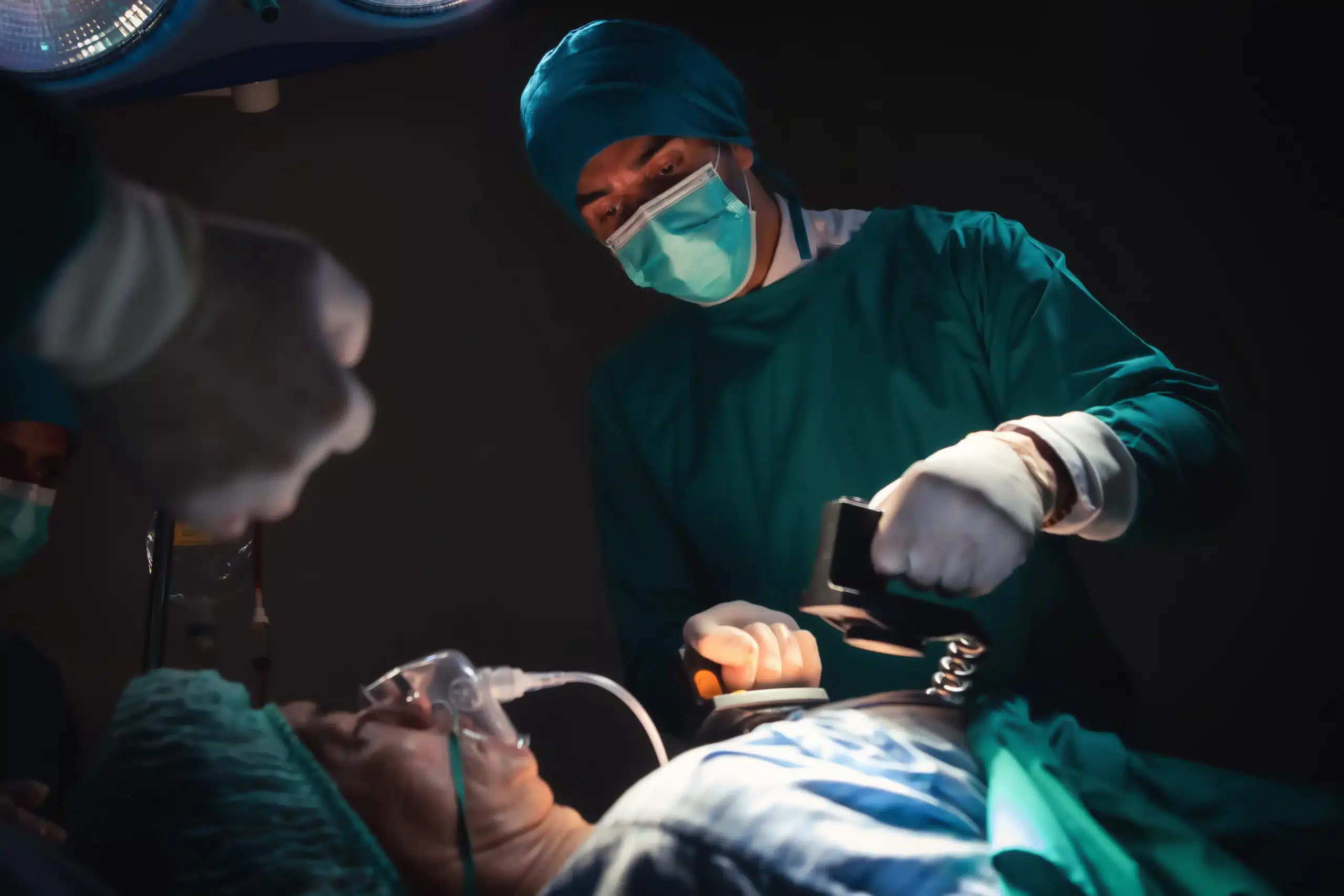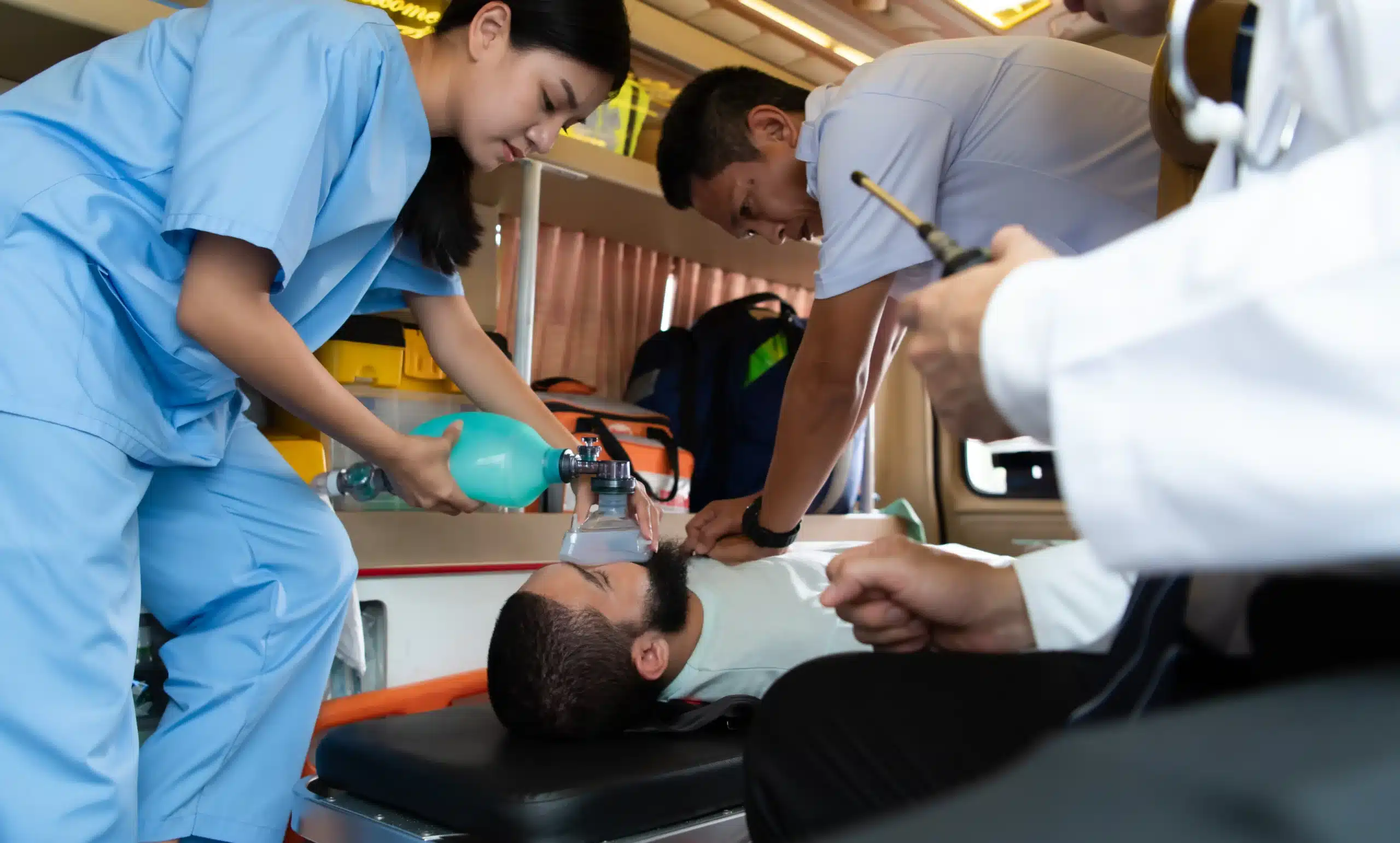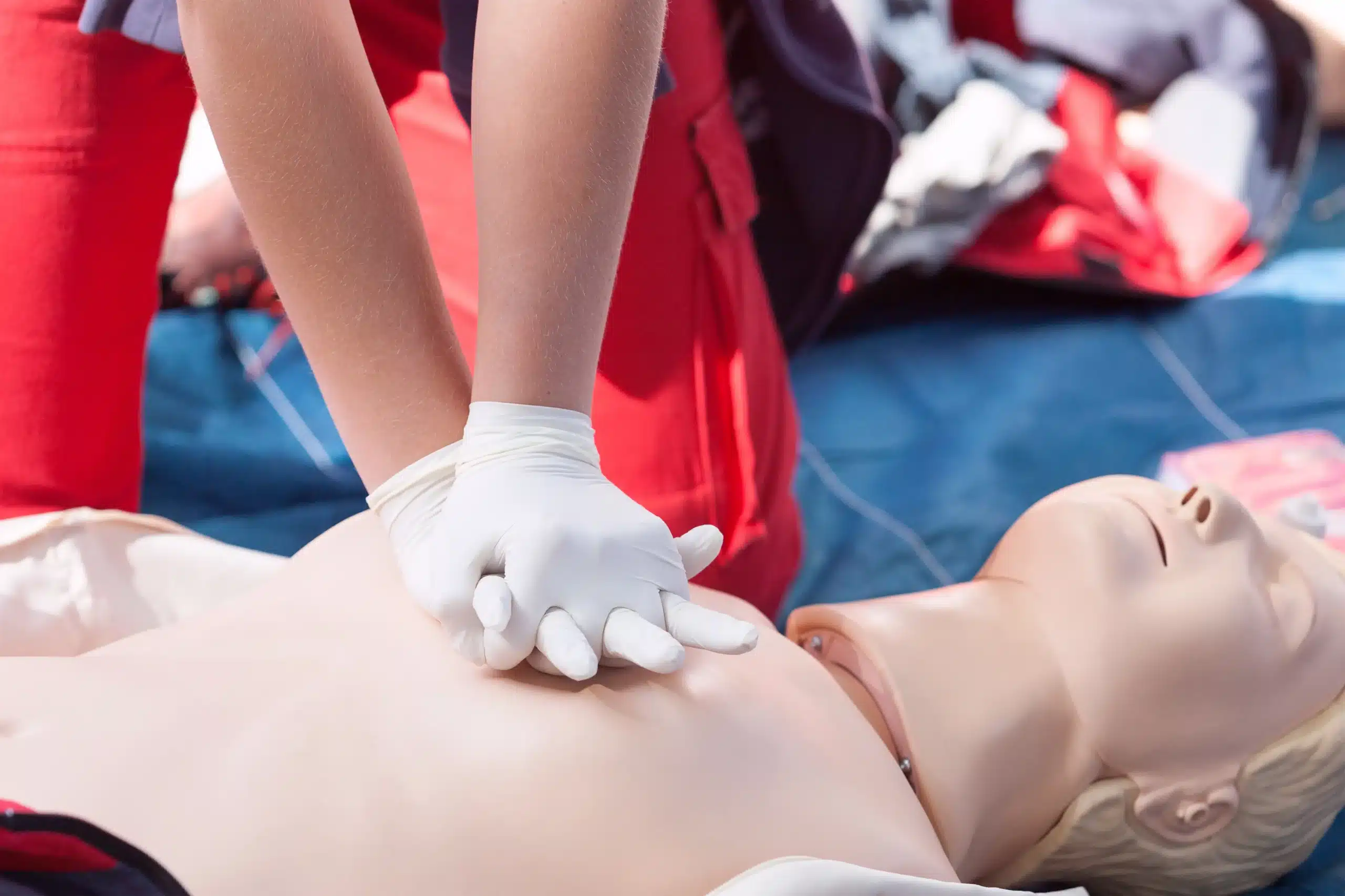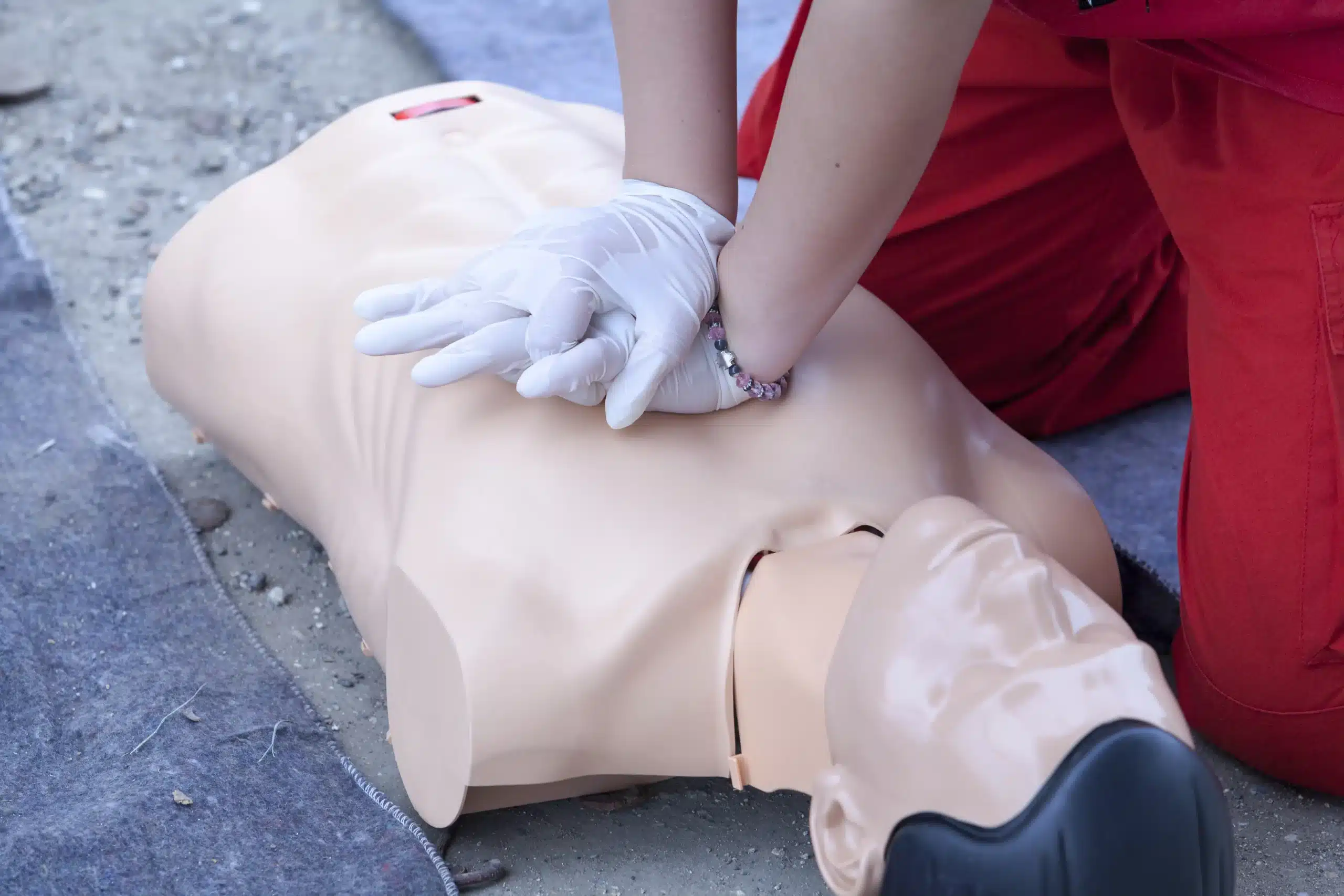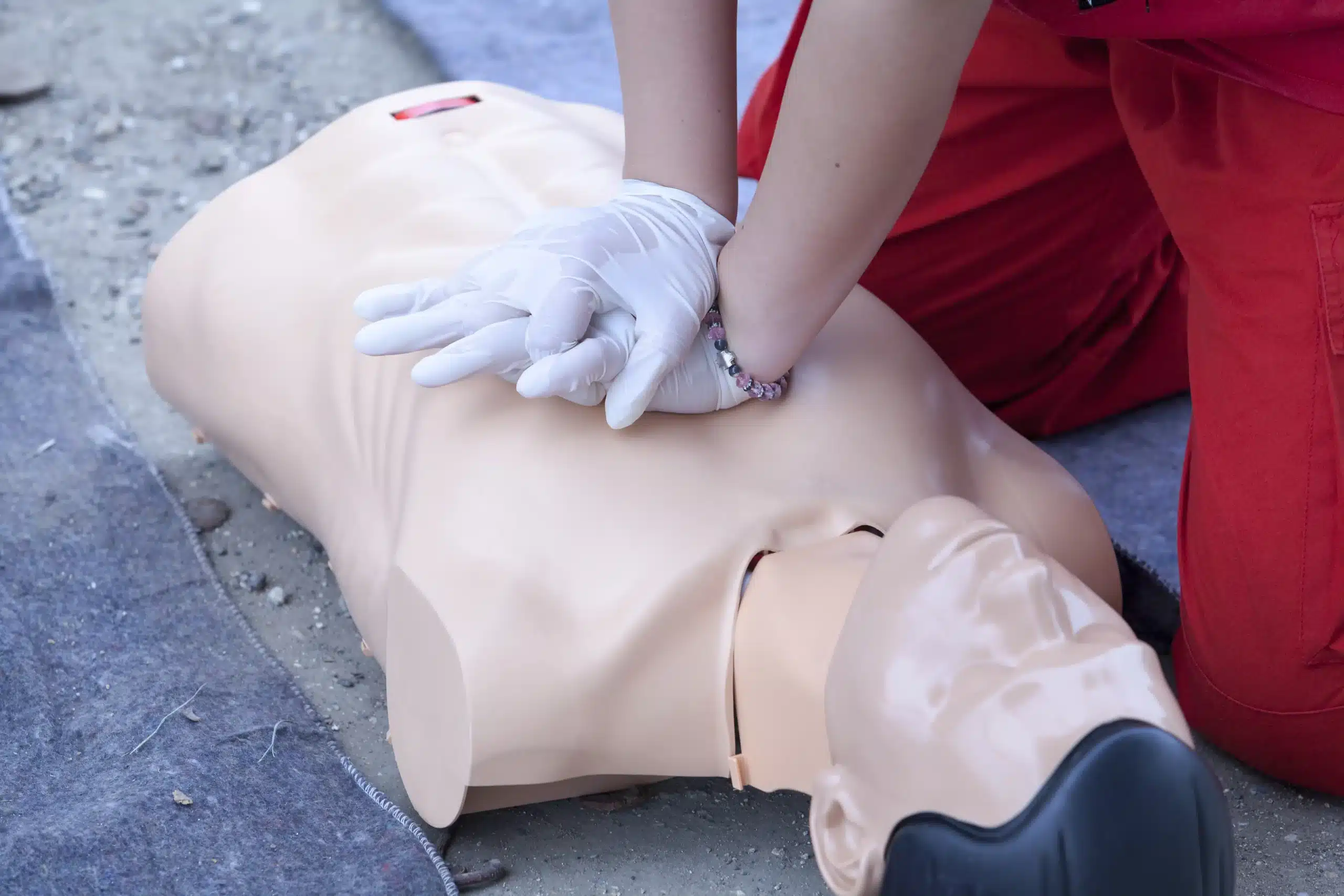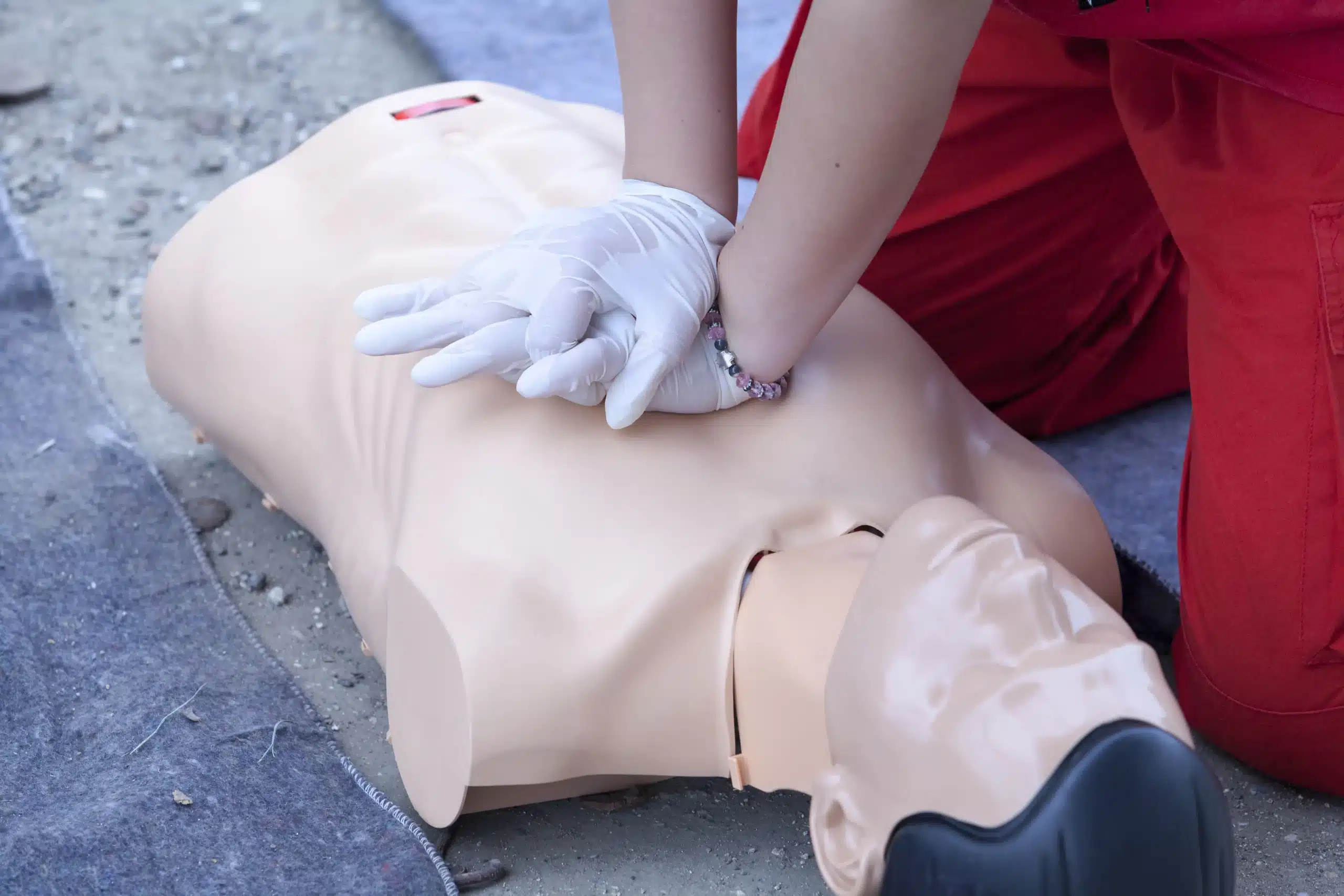In an emergency, seconds can matter. Knowing CPR can give you the confidence and skills to act quickly and potentially save a life. If you’re looking for CPR courses in Sacramento, this guide is for you. We’ll explore the different types of CPR certifications available, including BLS for healthcare providers and combined First Aid/CPR courses for anyone wanting to be prepared. We’ll also delve into the specifics of CPR classes in Sacramento, from what to expect during training to finding reputable providers like Folsom CPR Classes. Plus, we’ll cover the importance of renewing your certification and staying current with the latest life-saving techniques.
Key Takeaways
- CPR skills are essential for everyone: From basic CPR to advanced certifications like BLS, ACLS, and PALS, find the right training level to confidently respond to emergencies.
- Find a CPR class that fits your lifestyle: Explore various CPR class formats, including in-person, online, or blended learning, and compare providers to find the best fit for your schedule and budget. Don’t forget to ask about group discounts!
- Stay prepared by renewing your certification: Keep your CPR skills sharp by renewing your certification every two years and pursuing continuing education opportunities to stay up-to-date with the latest guidelines.
What is CPR?
What is CPR?
CPR stands for cardiopulmonary resuscitation. It’s a life-saving emergency procedure used when someone’s breathing or heartbeat has stopped, such as during a heart attack or near-drowning. CPR combines chest compressions and rescue breaths to keep blood circulating and carrying oxygen to vital organs until professional medical help arrives. Learning and practicing CPR empowers you to respond effectively in these critical situations. For those seeking comprehensive training, resources like this guide to CPR Certification for Beginners vs. Professionals offer valuable insights.
Why Learn CPR?
Knowing CPR can truly make a difference. Studies show that effective CPR can double or even triple a person’s chance of survival after cardiac arrest. For every minute without CPR, a victim’s chances of survival decrease dramatically. Bystander CPR can bridge that crucial gap before paramedics arrive, significantly improving outcomes. Taking a CPR and first aid course equips you with the skills and confidence to act quickly and potentially save a life. It’s about being prepared for the unexpected and having the ability to make a real impact when it matters most. The CDC highlights the sobering statistic that the vast majority of people who experience a heart attack outside of a hospital die. Learning CPR can help change those odds. Find out more about CPR statistics and the importance of training.
CPR Courses in Sacramento
Finding the right CPR course in Sacramento depends on your individual needs and goals. Whether you’re a healthcare professional, a concerned parent, or just want to be prepared for emergencies, there’s a course out there for you. Let’s explore some of the most common CPR certifications available in Sacramento.
Basic Life Support (BLS)
BLS certification goes beyond standard CPR training. It equips you with the skills to manage cardiac arrest, respiratory distress, and airway obstructions. These skills are essential for providing immediate care until professional medical help arrives. BLS certification is often a prerequisite for other advanced certifications and is invaluable for healthcare professionals, first responders, and anyone working in a healthcare setting. If you’re looking for comprehensive training in essential life-saving techniques, a BLS course is an excellent place to start.
Advanced Cardiac Life Support (ACLS)
ACLS courses are designed for healthcare professionals who require advanced cardiovascular life support skills. This training covers complex algorithms for managing cardiac arrest, stroke, and other cardiovascular emergencies. You’ll learn advanced airway management techniques, how to interpret cardiac rhythms, and how to respond effectively to various cardiac events. ACLS training is crucial for physicians, nurses, paramedics, and other healthcare providers who manage patients during these critical situations.
Pediatric Advanced Life Support (PALS)
PALS courses focus on the specific needs of pediatric patients experiencing respiratory or cardiac emergencies. This specialized training emphasizes early recognition and intervention for infants and children. PALS certification is essential for healthcare providers working in pediatrics, emergency medicine, and intensive care units. It provides the knowledge and skills to give effective care to young patients during life-threatening events.
First Aid & CPR
Combining first aid and CPR training empowers you to respond to a wider range of emergencies. From treating minor injuries like cuts and burns to managing life-threatening situations like choking and cardiac arrest, this comprehensive training provides valuable skills for anyone. Whether you’re a parent, teacher, coach, or simply want to be prepared for the unexpected, a combined first aid and CPR course is a smart choice.
Top Sacramento CPR Providers
Finding the right CPR class can feel overwhelming, but several excellent providers in Sacramento can help you gain these lifesaving skills. Here’s a quick rundown of some top options:
Folsom CPR Classes
Folsom CPR Classes excels in offering flexible and affordable BLS training. They provide various learning formats and competitive pricing, making getting certified convenient. Daily classes are available, fitting easily into busy schedules. They also offer other American Heart Association courses like ACLS, PALS, and First Aid. If convenience and affordability are your priorities, Folsom CPR Classes is worth checking out.
American Red Cross
The American Red Cross is a well-known provider of CPR training, with various learning options, including in-person, online, and blended learning. Their in-person CPR classes offer hands-on training and a two-year certification that meets OSHA requirements. This makes them a solid choice for those who prefer a recognized name and a variety of learning styles. Learn more about CPR classes in Sacramento through the American Red Cross.
CPR Certification Sacramento
CPR Certification Sacramento offers American Heart Association (AHA) certified CPR and First Aid classes. They provide same-day certification cards—a huge plus for those needing certification quickly. With over 100,000 students trained nationwide, they have a proven track record. CPR Certification Sacramento is a good option if you need fast certification and AHA-approved training.
Safety Training Seminars
Safety Training Seminars offers a comprehensive range of American Heart Association (AHA) courses, including CPR, BLS, ACLS, PALS, and First Aid. They provide official AHA certification cards, valid for two years. With classes available seven days a week, they offer convenient scheduling. Explore Safety Training Seminars if you need a provider offering a wide range of courses and flexible scheduling.
Sacramento CPR Classes
Sacramento CPR Classes focuses on providing a positive learning experience and setting students up for success in emergency medical training. Their blended learning courses cover a range of vital emergency skills, including CPR, BLS, ACLS, and PALS. If a supportive learning environment is important to you, consider Sacramento CPR Classes.
What Happens in a CPR Class?
So, you’ve decided to take a CPR class—fantastic! Knowing what to expect can help you feel prepared and confident. Here’s a look at what a typical CPR course entails:
Class Length and Format
CPR and First Aid classes usually run between two and four hours, depending on the course type and learning material. You’ll find several class formats to choose from, including in-person, online, or a blended learning experience that combines online coursework with in-person skills practice. Folsom CPR Classes offers a variety of schedules and formats to suit your needs.
Skills You’ll Learn
In a CPR class, you’ll learn the essential skills to respond to cardiac arrest and other emergencies. This includes chest compressions, rescue breaths, and how to recognize the signs of a heart attack. A BLS (Basic Life Support) certification course covers these skills and more, including AED (Automated External Defibrillator) use and airway management techniques. BLS certification also prepares you to recognize and respond to other life-threatening emergencies, such as choking or stroke. More advanced courses, like ACLS (Advanced Cardiovascular Life Support) and PALS (Pediatric Advanced Life Support), expand on these core skills.
Practice and Simulations
Hands-on practice is a key component of any CPR class. You’ll use training manikins to practice chest compressions, giving rescue breaths, and other techniques. Instructors are there to provide guidance and feedback, helping you refine your technique. Many CPR classes also use simulations to help you apply your skills in realistic scenarios. This practice helps build your muscle memory and confidence, preparing you to act effectively in a real emergency. For example, CPR classes in Sacramento often emphasize this hands-on training component.
Certification
After successfully completing the course, you’ll receive a certification card. Most CPR certifications, including those from the American Heart Association (AHA), are valid for two years. Remember to keep your certification current to ensure you’re always ready to assist in an emergency. CPR Certification Sacramento offers resources for finding certified CPR training.
Choose the Right CPR Class
Finding the right CPR class involves a little research, but it’s worth the effort to ensure you get the training you need. Here’s a breakdown of how to choose the best class for you:
Define Your Needs and Goals
Before you start searching for CPR classes, ask yourself a few key questions. Why are you taking this class? Is it for personal knowledge, a job requirement, or part of a professional license? Understanding your “why” will help you choose the right course. Also, think about your learning style. Do you prefer hands-on learning, or do you thrive in a more independent, online environment? Finally, consider your schedule and find a class time that works for you. Folsom CPR Classes offers classes seven days a week for your convenience.
Compare Classes and Providers
Not all CPR classes are created equal. Different providers offer various courses, and it’s essential to understand the distinctions. For example, Folsom CPR Classes offers a range of American Heart Association (AHA) courses, including BLS, ACLS, PALS, and First Aid. These courses provide you with an official AHA certification card, valid for two years. Make sure to compare what different training centers offer to find the best fit. For those needing more specialized training, Folsom CPR Classes also offers the RQI program.
Cost and Discounts
CPR class costs can vary based on the provider and the type of course. Basic CPR/AED certification typically falls between $60 and $80, while adding first aid training usually increases the total to between $80 and $100. Many providers, including Folsom CPR Classes, offer discounts for groups, so if you’re training with friends, family, or coworkers, be sure to ask!
Online vs. In-Person
You now have more options than ever when it comes to CPR training. While traditional in-person classes remain popular, online and blended learning courses are becoming increasingly common. Online courses offer flexibility, allowing you to learn at your own pace, while in-person classes provide hands-on practice and direct interaction with an instructor. Consider which format best suits your learning style and schedule. Blended learning courses can be a great option, especially for healthcare providers.
Renew Your CPR Certification
CPR skills are essential for responding to emergencies, but certifications expire. Knowing how and when to renew is key to maintaining your life-saving abilities. Let’s break down the renewal process and why staying current matters.
Renewal Process
CPR certifications are typically valid for two years. Keep track of your expiration date to avoid any lapse in your credentials. Before your certification expires, find a certified training center offering renewal courses. Folsom CPR Classes offers a variety of courses to fit your schedule. The renewal process involves demonstrating your CPR proficiency and updating your knowledge on any changes in guidelines. Once you complete the renewal course, you’ll receive an updated certification card, good for another two years.
Continuing Education
Even if your certification isn’t due for renewal yet, consider taking advantage of continuing education opportunities. These courses and workshops can help you refine your skills and stay informed about the latest advancements in CPR techniques. The American Heart Association frequently updates its guidelines, so staying current is crucial for providing effective care. Continuing education demonstrates your commitment to high-quality CPR and can boost your confidence in emergencies.
Stay Up-to-Date
Staying up-to-date with your CPR certification isn’t just about having a valid card; it’s about being prepared to save a life. Regular training reinforces best practices and helps you respond quickly and efficiently under pressure. While an expired certification doesn’t legally prevent you from performing CPR, maintaining current skills is always recommended. Check with your employer or regulatory bodies for any specific requirements regarding CPR certification. Resources like the Red Cross and the American Heart Association offer valuable information and training opportunities.
Related Articles
- Why CPR Is Essential in Healthcare
- Life-Saving Benefits of Workplace CPR and First-Aid Training
- BLS for Healthcare Providers in Citrus Heights – Folsom CPR Classes
- ACLS Courses in Citrus Heights: Find the Right One for You – Folsom CPR Classes
- CPR Training in Sacramento: Your Complete Guide – Folsom CPR Classes
Frequently Asked Questions
What’s the difference between CPR and BLS? CPR is the core set of skills within BLS (Basic Life Support). BLS encompasses CPR but also includes other critical skills like using an AED, relieving choking, and providing initial care for other life-threatening emergencies. Think of BLS as a more comprehensive toolkit for responding to medical emergencies.
How do I choose the right CPR class for me? Consider your specific needs. Are you getting certified for a job, personal enrichment, or to meet licensing requirements? Think about your learning style (hands-on or online), your schedule, and your budget. Compare different providers and the types of certification they offer (AHA, Red Cross, etc.) to find the best fit.
How often do I need to renew my CPR certification? Most CPR certifications are valid for two years. It’s essential to keep track of your expiration date and renew before it lapses to maintain your credentials and stay up-to-date with the latest guidelines.
What if I need CPR certification quickly? Some providers offer same-day certification cards upon successful course completion. Look for classes specifically advertising this option if you’re on a tight deadline. Also, consider online or blended learning options, which can sometimes offer faster completion times.
Are online CPR courses as good as in-person classes? Both online and in-person CPR courses have their advantages. Online courses offer flexibility and convenience, while in-person classes provide hands-on practice and direct interaction with an instructor. Blended learning, which combines online coursework with in-person skills sessions, can be a great way to get the best of both worlds. The most important factor is choosing the format that best suits your learning style and needs.
